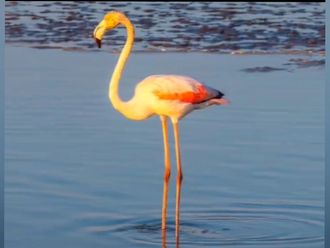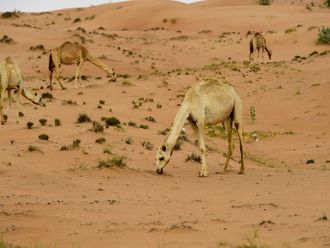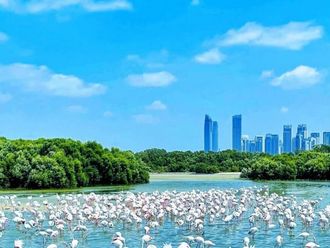
There are only 200 northern hairy nosed wombats left in the wild, making them one of the most endangered species on the planet, more at risk than even than the giant panda and the Sumatran tiger.
But innovative, new methods of “re-wilding” — a kind of eco-engineering — in which species are reintroduced into habitats where they once lived, are having some success and might point the way for conservation of other species too.
Scientists now believe there is hope for the wombats’ survival, partly due to locations being found for the species to live in, back in their old habitat range from centuries ago.
“In the 1980s, there were as few as 35 of the northern hairy-nosed wombat remaining on the planet. Now we have 200,” said Alan Horsup, a scientist with the threatened species unit at the department of the environment and heritage protection (DEHP) in Queensland.
Once the northern hairy-nosed wombat lived throughout a band of arid, sand forest from Queensland through to New South Wales and Victoria. But competition with cattle for grass to eat since the late 18th century has caused the wombats to slowly die out.
Re-wilding started in 2009 when the Queensland government started to translocate 15 of the wombats by air and road, from Epping Forest in central Queensland, to a second site: a 105-hectare eucalyptus forest on part of a cattle property, owned by the Underwood family, near St George in southern inland Queensland. The Underwood family donated the land to the government for the wombats to live in. It was an unusual partnership between a farming family and the government, but one that is working, because of the family’s interest in wombats. New babies (joeys) are expected in mid 2014.
Now a third relocation is being planned and the team is searching for a site of 400 hectares or more of suitable forest with deep, sandy soil.
Horsup explained that having previously just one location at Epping Forest meant that the wombat was extremely vulnerable to disease, fire, flood and attacks by dogs.
Although re-wilding has been in existence for a few decades it is only recently that conservationists have started to take it more seriously. Part of its growing acceptance is due to conservationists realising that the survival of species depends intrinsically on the survival of ecosystems, while those same ecosystems and species are under unprecedented pressure from climate change and habitat destruction.
In March this year, the International Union for the Conservation of Nature (IUCN) announced that it was compiling a Red List of Threatened Ecosystems alongside its annual species at risk list.
Its success, however, depends not only on suitable habitat but on how the animals cope after being moved.
In the case of wombats, locals turned into diggers themselves, excavating burrows for the marsupials to move into.
“Wombats cannot survive above ground for long, and digging their own burrow requires a lot of energy, so we needed to help them. Burrows are essential for wombats: to regulate the underground temperature and humidity,” said Dave Harper, principal project officer, threatened species, at the department of Environment and Heritage Protection in Queensland. “They are known as the ‘engineers’ of the mammal world, as they dig burrows up to 90 metres long.”
The team used an augur drill — a kind of bulldozer with a large drill on its nose — to create man-made wombat burrows. The wombats then wasted little time in making their own renovations, digging extra chambers.
According to Clive Hambler, an ecologist at the University of Oxford in the United Kingdom, re-wilding is essentially about restoring ecosystems.
“Reintroducing species to ranges they have been driven from in historical times is a key conservation tool,” he said. “It’s particularly important to reintroduce species which are ‘ecological engineers’, such as burrowing wombats, because the way they change the physical landscape benefits so many other species.”
The northern hairy-nosed wombats’ burrows, for example, also act as home to echidnas as well as to pardalote birds.
Hambler describes how re-wilding is essentially about reintroducing missing animals and plants back into a habitat where they once lived, eradicating invasive species and then letting the ecosystem look after itself following the reintroduction.
But wombat conservation is also dependent on the fact that female wombats usually only give birth to one joey every two years and IVF techniques for wombats are still at an extremely rudimentary level.
No northern hairy-nosed wombat now lives in zoos, due to their high levels of stress in captivity.
–Guardian News & Media Ltd












